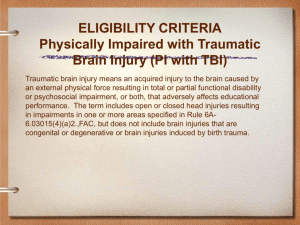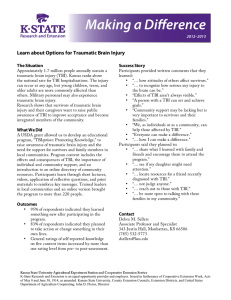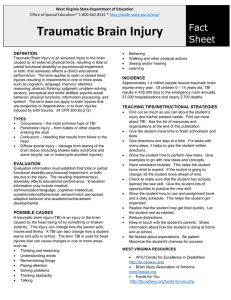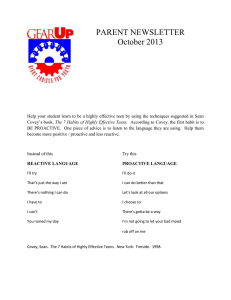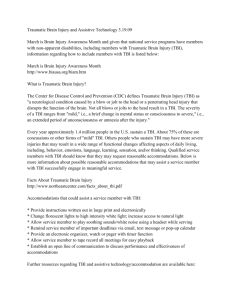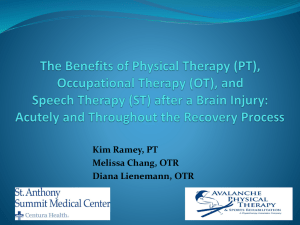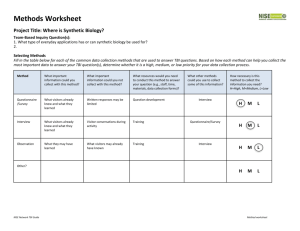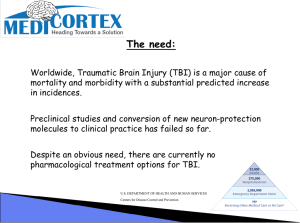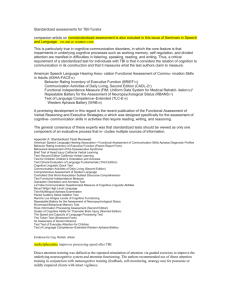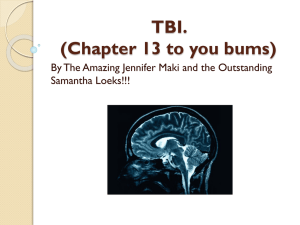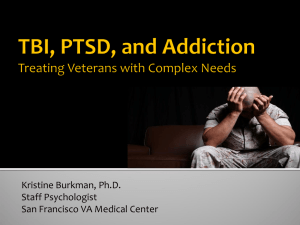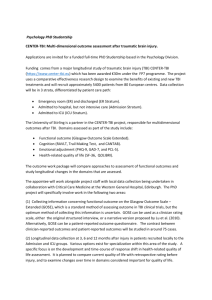The Human Cost of Brain Injury - Dr Tracey Ryan
advertisement
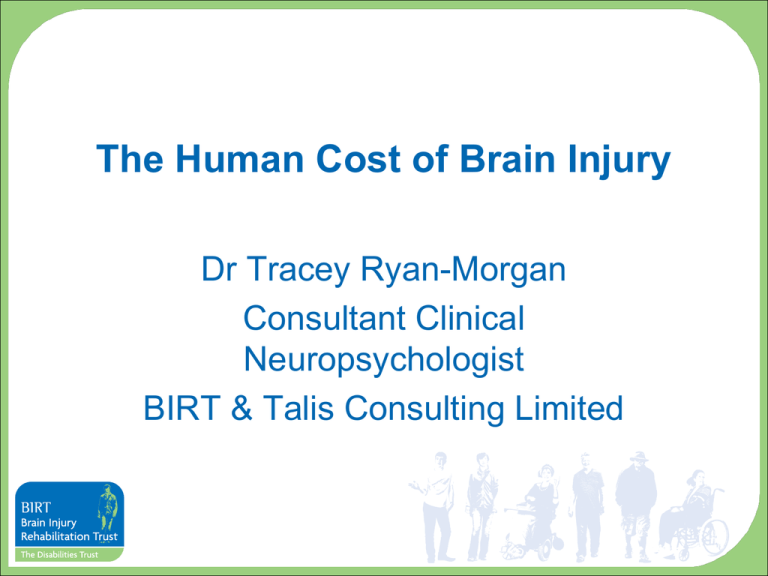
The Human Cost of Brain Injury Dr Tracey Ryan-Morgan Consultant Clinical Neuropsychologist BIRT & Talis Consulting Limited TBI Statistics: 2011 data • Estimated 1 million people attend A&E in the UK following head injury • Of these, around 135,000 people are admitted to hospital each year due to brain injury • Estimated 500,000 people (aged 16-74) living with long-term disabilities as a result of TBI • Over 130,000 people have a stroke each year in England and Wales • There are NO specific data for Wales! www.headway.org.uk Terminology? • Traumatic Brain Injury – This is commonly defined as an alteration in brain function, or evidence of brain pathology, caused by an external force • Acquired Brain Injury – This is defined as an injury to the brain which is not congenital, hereditary, degenerative or caused by birth trauma. Causes of Acquired Brain Injury There are many causes of acquired brain injury and these include: – – – – – – – – Trauma to the head (TBI) Cerebral thrombosis or haemorrhage (strokes) Tumour Epilepsy (Primary) Hypoxia (reduced or absence of oxygen) Neurodegenerative disease (e.g. dementia) Brain infection (e.g. meningitis or encephalopathy) Chronic alcohol or drug misuse Epidemiology of TBI Of all traumatic brain injuries: • Mild TBI or concussion accounts for 80% • Moderate TBI accounts for 10% • Severe TBI accounts for 10% Severity of head injury is classified according to: 1. How long and to what level the person has altered consciousness (GCS and LoC) 2. How long before the person’s memory starts laying down new memories post incident (PTA) Indicators of severity Typical behaviours which challenge – after an acquired brain injury • • • • • • • Lack of empathy Lack of insight / self-awareness Disinhibition in speech / behaviour Agitation Aggression (verbal / physical) Impulsivity Impaired social judgement Impact on Families • Family members experience high levels of anxiety, stress and depression after brain injury • There is a decrease in relatives’ capacity for coping, particularly with emotional and behavioural problems • Some families cope better than others, but all experience difficulties • There is a higher degree of parental stress in families where one spouse has had a brain injury • The head injured person’s role in their family changes after a head injury (Kieffer-Kristensen & Teasdale, 2011) Impact on Relationships • Spouses report feeling isolated within a marriage where their emotional needs are not being met and where their roles within the relationship have changed • Marriages are most susceptible to breakdown between 5 and 6 years post-injury (Wood & Yurdakul, 1997) • Some studies report a high separation rate among couples where one spouse had suffered a TBI (Wood & Yurdakul, 1997, Wood, Liossi & Wood, 2005) whereas other studies provide data to contradict this finding (Kreutzer, Marwtiz, Hsu, Williams & Riccick, 2007) • There is evidence that the longer the couple were married prior to injury and the length of time since injury makes divorce / separation less likely Driving / accessing the Community • Many individuals who return to driving post brain injury report problems with: – behaviour (anger, aggression, irritability: 48.2%), – memory ( 64%), – concentration and attention (28.1%), and – vision (28.1%). (Hawley, 2001) Impact on identity • Many people experience identity change after brain injury. Impaired self-awareness after acquired brain injury is also common and can, along with other factors, affect the identity change a person may experience (Coetzer, 2008) • Individuals often struggle to understand and accept the changes brought about by brain injury and to reconcile their pre- and post-injury selves (Doherr, 2013) Impact on Mood • Typically, studies show that about a third of TBI survivors experience emotional problems between 6 months and a year post injury. • The presence of emotional or behavioural problems post injury which impact on the individual’s family have been reported at 84% . • Clinically significant levels of hopelessness (35%) suicidal ideation (23%), and suicide attempts (18%) postinjury have been identified (Gracey, 2002) Impact on Employment / studies – Among people with TBI over 40% returned to work after one year with a further 40% returning to work after two years – Length of time since injury made little difference to the chances of returning to work – Many people with TBI were unable to sustain their job (Velzen et al. 2009) Impact on Employment / studies – Difficulties in social communication and interpersonal functioning have been shown to be barriers to a successful return to work even though returning to work is seen as a benchmark in recovery and assists the individual with post-injury identity and adjustment and contributes to the financial resources of the family. (Bowen, Hall, Newby, Walsh, Weatherhead & Yeates , 2009)
